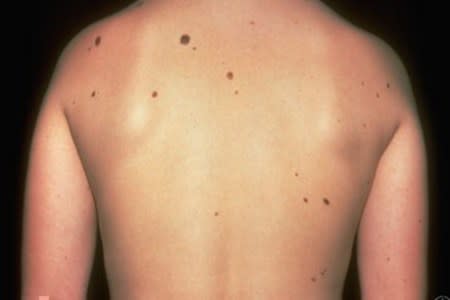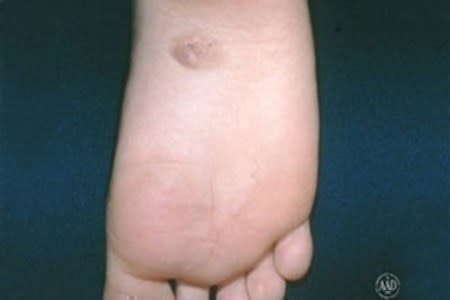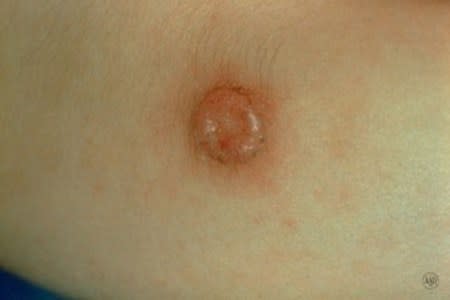Moles: Who gets and types
Who gets moles?
Nearly every adult has a few moles. Most adults have a type of mole called a common mole, which is harmless.
There are other types of moles. Below you'll see types of moles that can increase a person’s risk of getting melanoma, the most serious type of skin cancer. If you discover any one of these moles on your skin, you should have a dermatologist who can give you skin exams.
Types of moles that increase melanoma risk
Atypcial moles
Atypical moles
Melanoma can grow in an atypical mole. Anyone who has atypical moles, such as this patient, should watch his or her moles for change.

Atypical mole
Four or more atypical moles.
Already had a melanoma.
A first-degree relative (parent, brother, sister, or child) who had melanoma.
Your dermatologist may call an atypical mole a dysplastic nevus. Nevus is the medical term for mole. When your dermatologist is talking about two or more moles, you may hear the word "nevi."
Atypical moles (or nevi) are often:
Larger than an eraser on the end of a pencil.
Have an odd shape (not round).
Show more than one color—mixes of tan, brown, red, and pink.
Atypical moles can appear anywhere on the body. They often appear on the trunk. You can also get them on your scalp, head, or neck. Atypical moles rarely appear on the face.
Some people who have many atypical moles have a medical condition called familial atypical multiple mole-melanoma (FAMMM) syndrome. People with FAMMM syndrome have:
Many moles—more than 50
Some moles that are atypical
A blood relative who has (or had) melanoma
Congenital mole
Congenital mole
This congenital mole was small when the girl was born. When it started to grow, her dermatologist removed it.

Spitz nevus
Most Spitz nevi appear on the skin during the first 20 years of life. Adults also occasionally get Spitz nevi.
Spitz nevus
This type of mole is often pink, raised, and dome-shaped.

Acquired mole (50 to 100 or more)
If a person has 50 or more of these moles, the person has a higher risk for getting melanoma.
Images
 Atopic dermatitis: More FDA-approved treatments
Atopic dermatitis: More FDA-approved treatments
 Biosimilars: 14 FAQs
Biosimilars: 14 FAQs
 How to trim your nails
How to trim your nails
 Relieve uncontrollably itchy skin
Relieve uncontrollably itchy skin
 Fade dark spots
Fade dark spots
 Untreatable razor bumps or acne?
Untreatable razor bumps or acne?
 Tattoo removal
Tattoo removal
 Scar treatment
Scar treatment
 Free materials to help raise skin cancer awareness
Free materials to help raise skin cancer awareness
 Dermatologist-approved lesson plans, activities you can use
Dermatologist-approved lesson plans, activities you can use
 Find a Dermatologist
Find a Dermatologist
 What is a dermatologist?
What is a dermatologist?